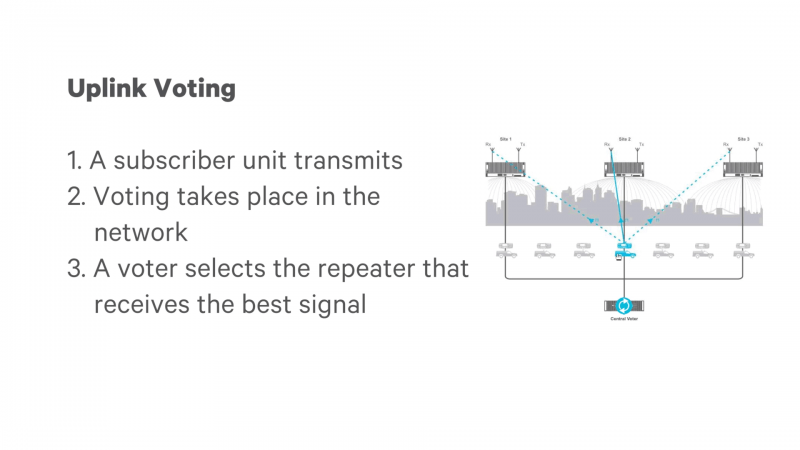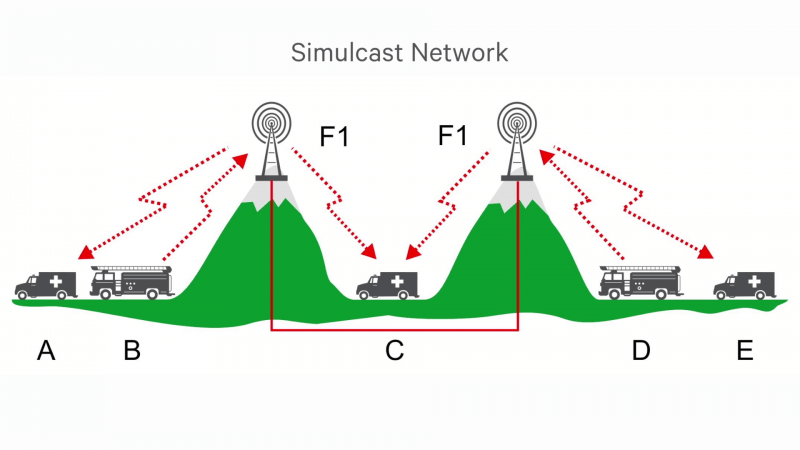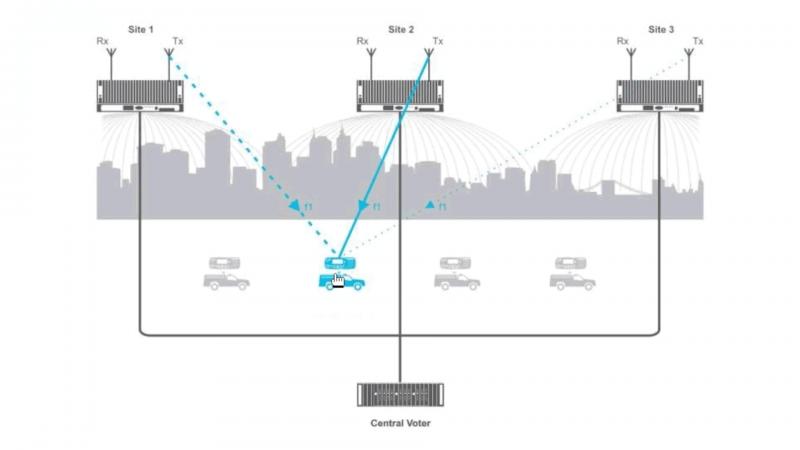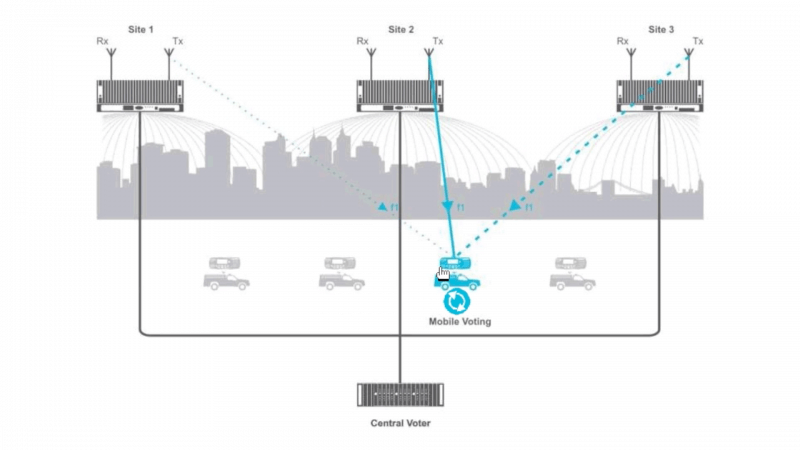Basic Radio Awareness
Communications Systems
Voting and Simulcast networks
Suppose a system has a number of different repeaters at different sites. All are transmitting the same audio, but users are often on the move. While they may begin with excellent reception at the first site, eventually they will experience better reception at the second site than the original first site.
A process called voting ensures that generally the radio user will get the best possible reception. Voting can occur in the subscriber units (downlink voting) or in the network (uplink voting) or in a combination of both.
Downlink voting, which takes place in the subscriber unit, allows the radio to automatically select the best quality channel from a group of channels that are transmitting the same audio.
This takes places in three stages:
Stage 1. The radio searches for activity on the channel in a process similar to scanning.
Stage 2. The subscriber unit measures the signal quality of all the channels.
Stage 3. The subscriber unit goes to the channel with the best signal strength and unmutes the receiver. In the background the scanning process continues to take place.
Uplink voting takes place in the network. It usually involves a network that has repeaters receiving on the same frequency, but transmitting at different frequencies. The network selects the best signal for repeating throughout. A subscriber unit transmits and voting then takes place in the network. A special box, such as a voter, selects the best possible audio from amongst the received signals because all the repeaters are receiving that transmission from the SEU. Such a network is called a voting network.

Another kind of voting network is called a simulcast network. It involves transmitting the same audio using the same modulation on the same frequency with multiple transmitters, all transmitting at exactly the same time. A simulcast network is designed so that all the repeaters synchronize their transmissions in time, making them appear as an extremely large single super repeater with a super large coverage area. This coordination of transmission is quite challenging, but for users operating a simulcast network it produces a great result.

The radios can move from one location to another without the user touching the radio or modifying its settings or changing channels, because they operate on a single frequency. The radios work everywhere.
 Radio Academy
Radio Academy







